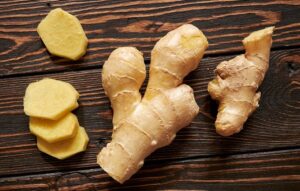Bone Broth: A Nourishing Food for Virtually Any Ailment
![]()
🦴 What Is Bone Broth?
Bone broth is a nutrient-rich liquid made by simmering animal bones and connective tissue—often with vegetables, herbs, and vinegar—for several hours. It’s commonly used in soups, stews, sauces, or consumed on its own as a warm, savory drink
Types of Bone Broth
Technically, you can make a bone broth out of anything with bones and skin. But most are made using leftovers from the butcher’s block. The most common types of bone broth available in grocery stores include:
Chicken bone broth
This is the most popular type of bone broth in the U.S. Chicken bone broth has a higher amino acid content than beef bone broth—though it is less nutrient-dense than turkey bone broth. It is also lower in fat than most other types of bone broth and has a relatively mild flavor that blends well into a variety of dishes.
Beef bone broth
While not as rich in amino acids as chicken bone broth, beef bone broth packs slightly more fat. This makes it a perfect base for rich stews and soups, such as French onion. Price-wise, it is about comparable to chicken bone broth, though it may be slightly more expensive if you make it at home with store-bought bones.
Bone broth has made a major comeback in the world of wellness—and for good reason. This ancient remedy, made by simmering animal bones and connective tissue, is packed with nutrients that support everything from gut health to glowing skin. Whether you’re sipping it as a warm drink or using it as a base for soups, bone broth is a simple yet powerful addition to your diet.
The Healing Power of Bone Broth: A Nutrient-Rich Elixir for Whole-Body Wellness
🌿 Gut Healing and Digestive Support
Bone broth is a staple in the GAPS diet, developed by Dr. Natasha Campbell-McBride, for its ability to heal and seal the gut lining. Rich in collagen and gelatin, it supports digestion and may help with conditions like leaky gut syndrome, IBS, and other gastrointestinal issues.
💪 Joint and Bone Health
Thanks to its high levels of collagen, gelatin, and amino acids like glycine and proline, bone broth helps maintain healthy joints and reduce inflammation. It also provides essential minerals like calcium, magnesium, and phosphorus, which are crucial for strong bones.
✨ Skin, Hair, and Nail Benefits
Want healthier skin, stronger nails, and shinier hair? Bone broth delivers. The collagen it contains supports skin elasticity and hydration, helping reduce wrinkles and promote a youthful glow.
🧠 Brain Function and Sleep
Bone broth is rich in glycine, an amino acid that promotes better sleep and supports cognitive function. A warm cup before bed can help calm the nervous system and improve sleep quality.
🛡️ Immune System and Detox Support
Traditionally used to fight colds and flu, bone broth’s immune-boosting properties come from its anti-inflammatory amino acids and minerals. Glycine also supports liver detoxification, helping your body eliminate toxins more efficiently.
💧 Hydration and Electrolyte Balance
Bone broth is mostly water and naturally contains electrolytes, making it a great way to stay hydrated—especially after illness or physical activity.
🏡 Why Homemade Is Best
While store-bought options exist, homemade bone broth—made from organic, pasture-raised bones—offers superior nutrition and flavor. Simmering bones with vegetables, herbs, and a splash of vinegar for 12–24 hours extracts the maximum nutrients.
🍲 Basic Bone Broth Recipe
🧂 Ingredients:
- 1–2 kg of beef bones, chicken carcasses, or fish bones (preferably organic and pasture-raised)
- 2 tablespoons of apple cider vinegar (helps extract minerals from the bones)
- 1 large onion, quartered
- 2–3 carrots, chopped
- 2–3 celery stalks, chopped
- 2–3 cloves of garlic, smashed
- 1–2 bay leaves
- A few sprigs of fresh herbs (like thyme or parsley)
- Salt and pepper to taste
- Enough water to cover everything in the pot
🔥 Instructions:
- Roast the bones (optional but adds flavor):
Place bones on a baking sheet and roast at 200°C (400°F) for 30–45 minutes. - Add everything to a large pot or slow cooker:
Place bones, vegetables, vinegar, and herbs in the pot. Cover with water. - Simmer gently:
- Stovetop: Bring to a boil, then reduce to a simmer for 12–24 hours.
- Slow cooker: Set on low for 24–48 hours.
- Pressure cooker: Cook for 2–3 hours.
- Skim foam: Occasionally skim off any foam or impurities that rise to the top.
- Strain and store:
Strain the broth through a fine mesh sieve. Let it cool, then store in jars in the fridge (up to 5 days) or freezer (up to 3 months).



